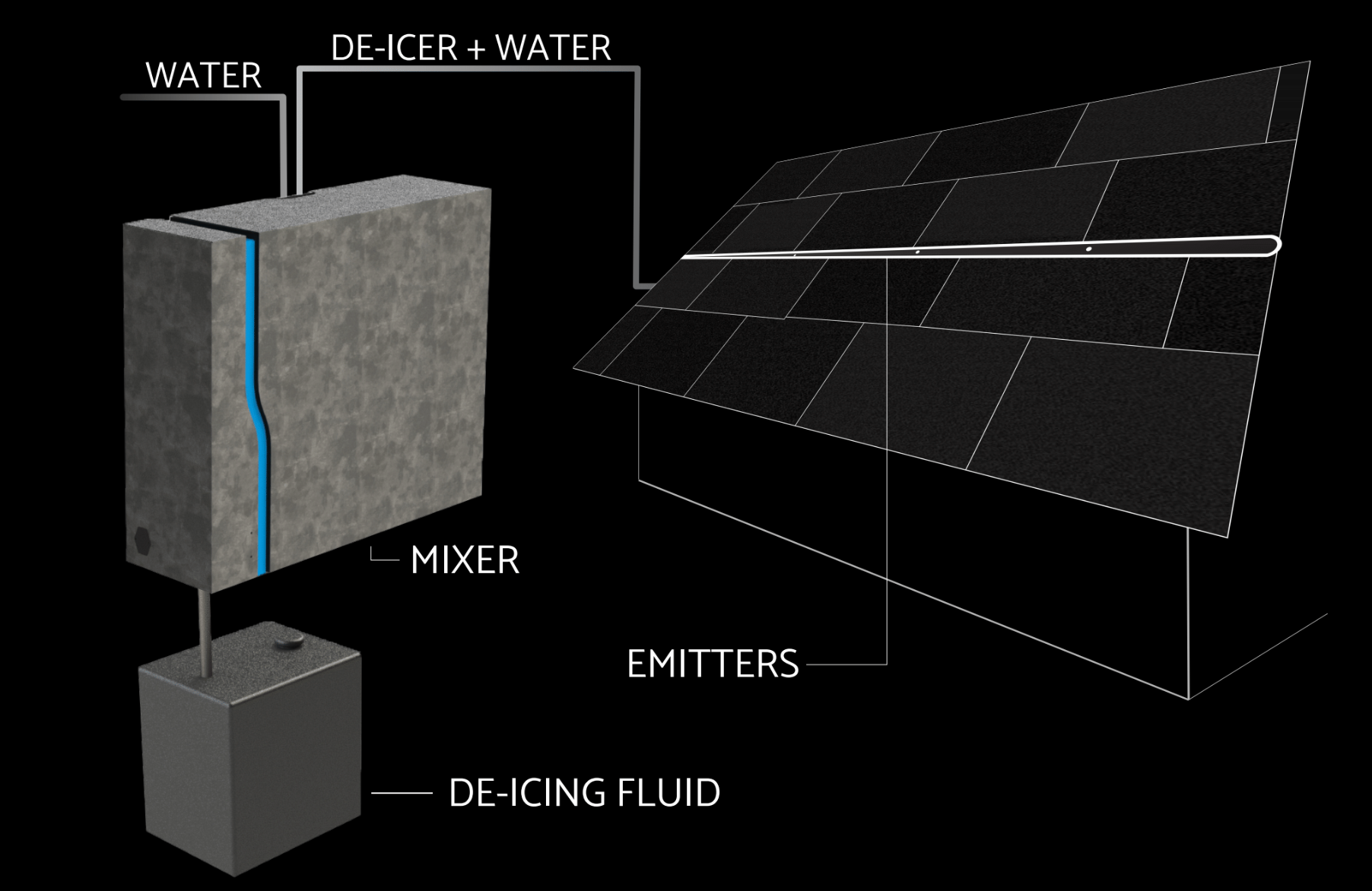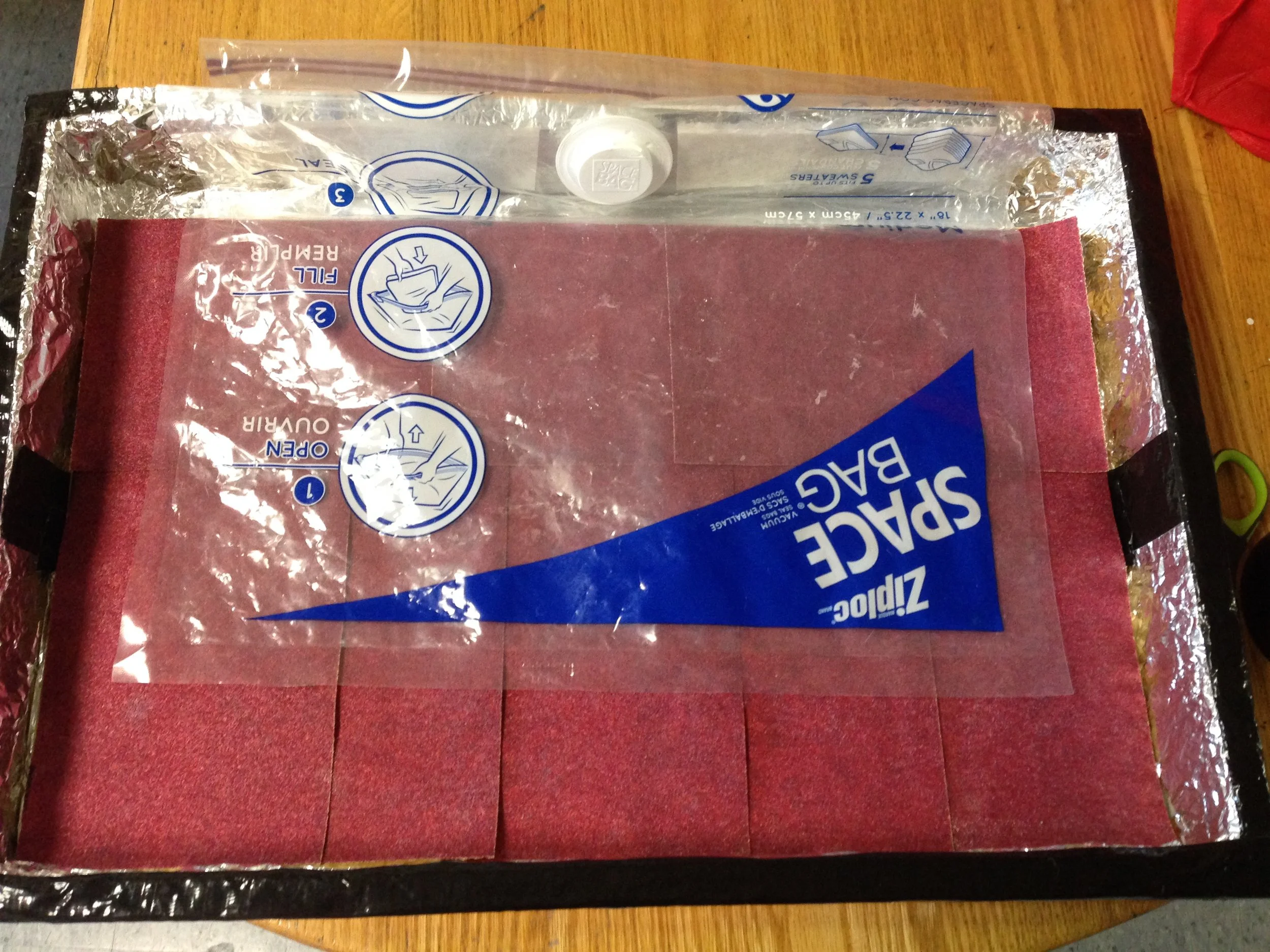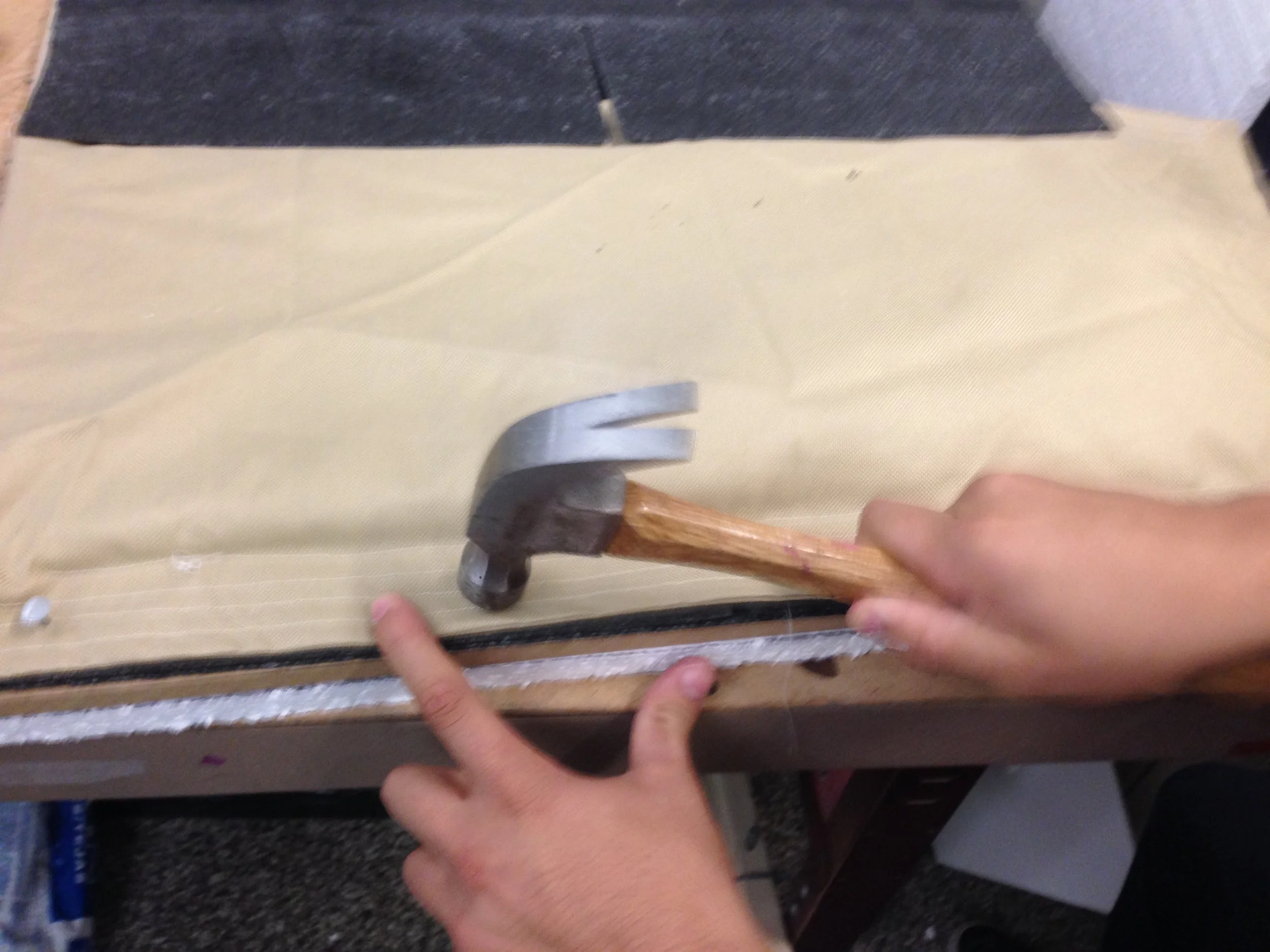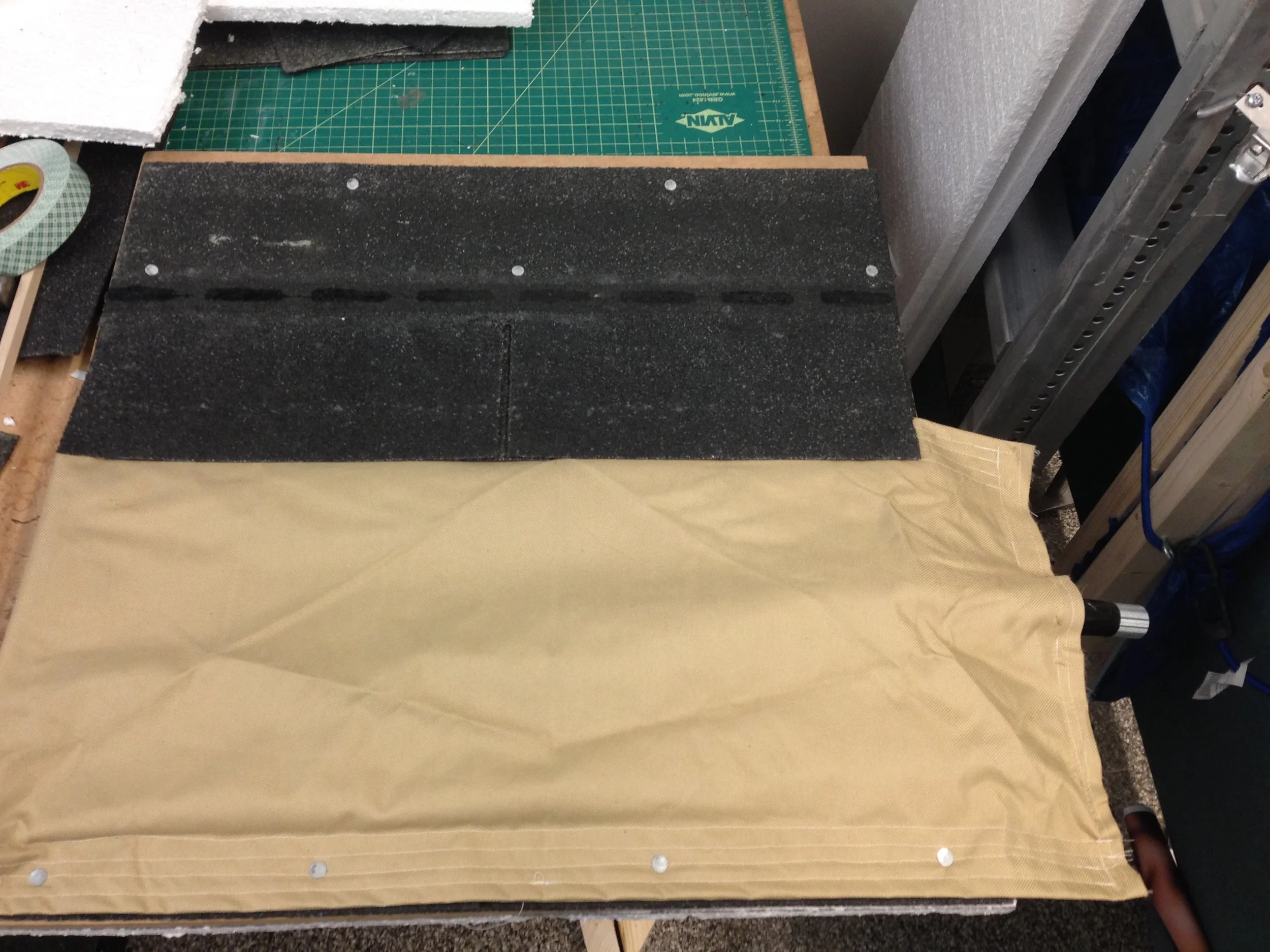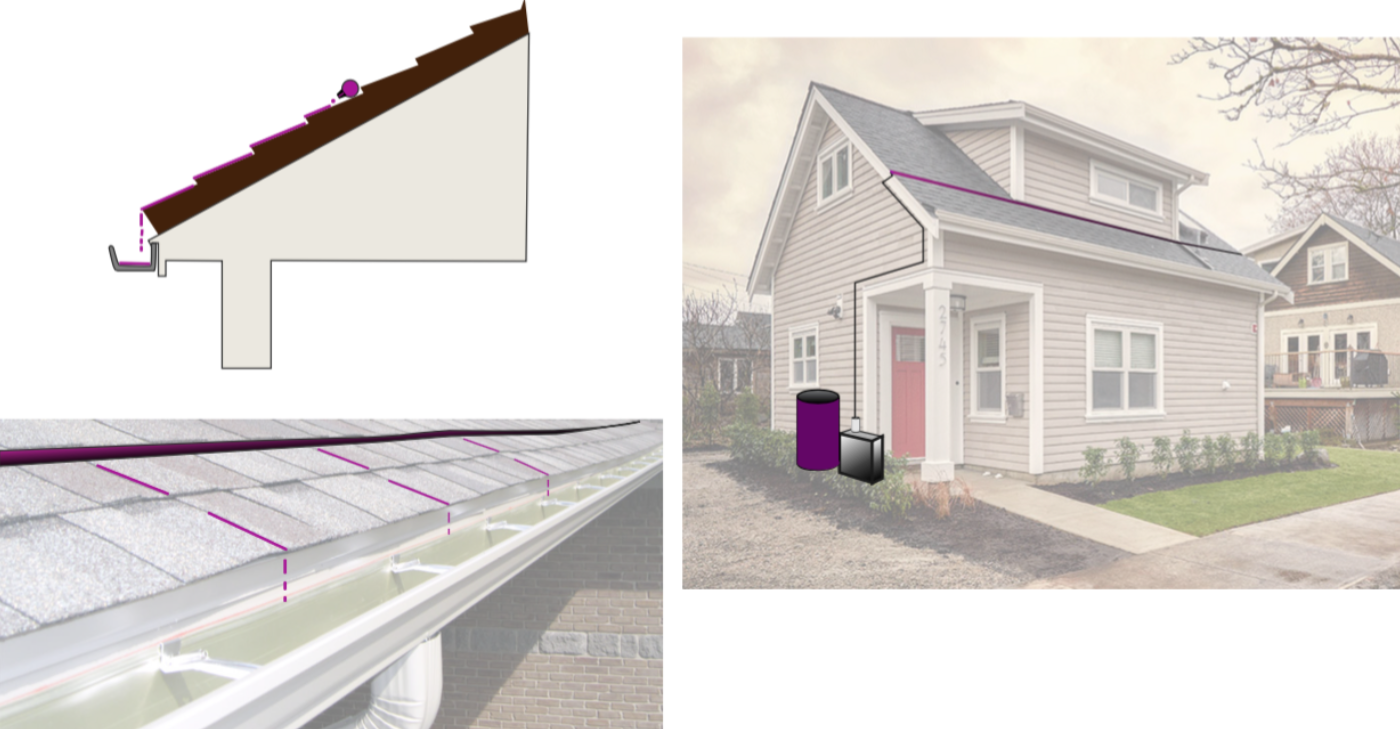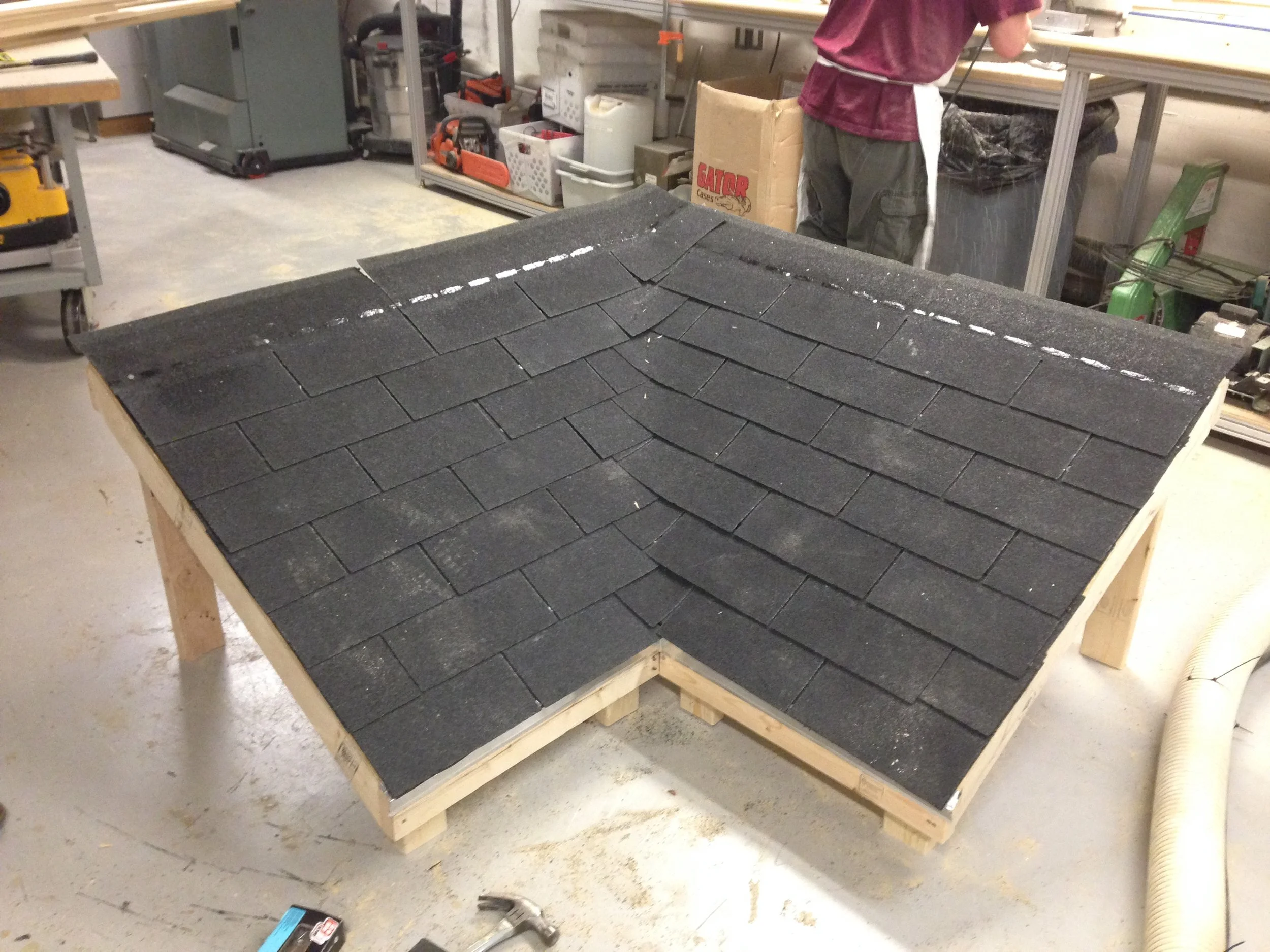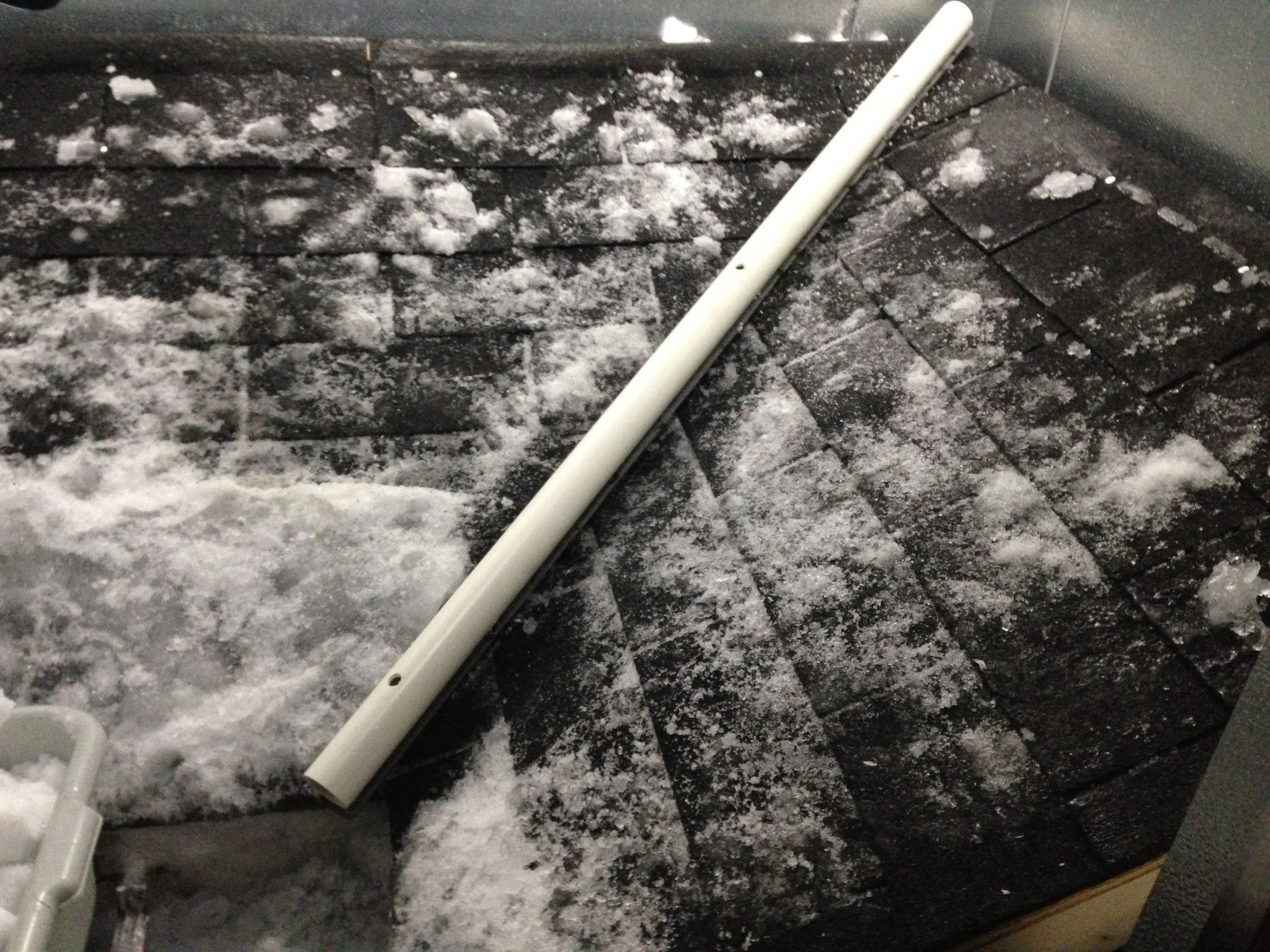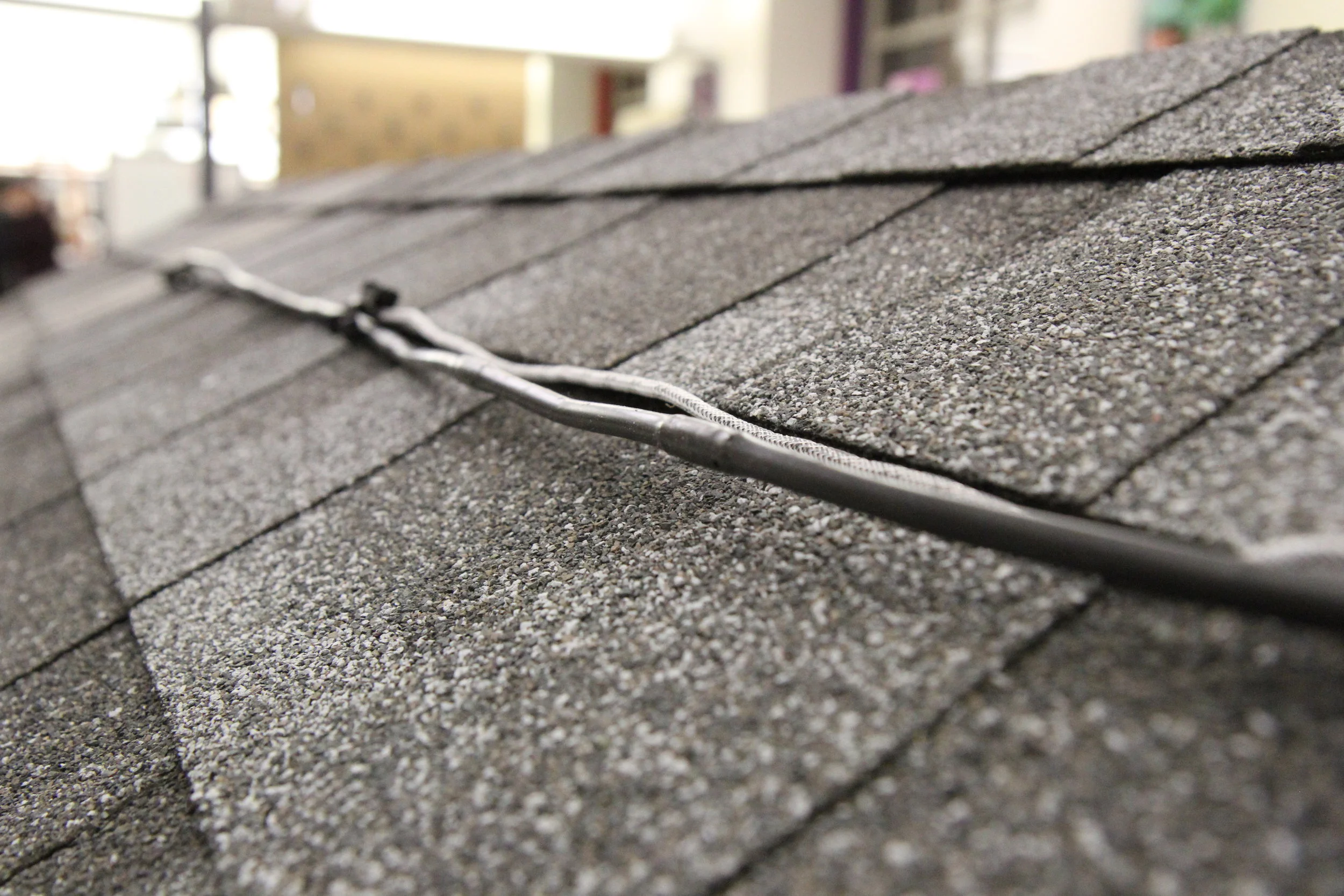floe
Roof DEicing & Ice Dam Prevention System
floe is a roof deicing system which prevents damage caused by ice dams in the wintertime. If the system senses ice dam conditions (adequate moisture in the air and temperatures below freezing), it begins the deicing process. Water and deicing fluid are first mixed together and then sent to emitters on the roof. The emitters then drip the fluid onto the roof to cut through any ice buildup and protect the house from related damage.
My responsibilities for this project included coming up with initial prototypes and models for potential ice dam mitigation methods. Later, I focused on creating a viable test environment in a snow-less winter and testing the floe system.
ice dams
Ice dams are walls of ice that build up on the edge of a roof. Heat from the attic first melts snow on the roof. This melted snow flows to the edge of the roof and refreezes into an ice dam. If the wall becomes large enough, it traps the snowmelt behind it instead of enabling it to refreeze. Eventually, the water will sink into the roof and cause water damage to the house.
Currently, there are many existing types of ice dam prevention mechanisms. Available solutions and preventive mechanisms include: installing metal roof edging, upgrading insulation, raking the snow off of the roof before it freezes, and calling professionals to remove ice dams. The most popular is a heated solution - by applying heat to the edge of the roof, the initial refreezing process is interrupted and ice dams no longer form. Although this method is widely used, it is incredibly costly due to the intrinsic inefficiencies of heating (roughly $1800 for an average-sized home of roughly 2,500 square feet).
floe aims to replace all of these conventional methods of deicing with a more energy-efficient and cheaper alternative.
air-based Ice Removal
The inspiration for air-based ice removal came from the way airplane wings use inflatable bladders to deice mid-flight. I made a simple model to test this concept and to better understand this method. Roof shingles were simulated with coarse sandpaper and a bladder was made from a space bag. Water was then frozen on top of the bag and mock roof to simulate a newly frozen ice dam.
After the dam had frozen over, the setup was propped up to replicate the slope of a roof and the bladder was inflated with a pump. The roughly 1/4" thick piece of ice frozen on top of the setup was easily cracked as the bladder began to expand. The bladder also managed to shed off the ice pieces as it reached full expansion. based off this experiment, it took roughly 2 psi to break the 1/4" thick ice.
The idea of using air to relieve ice from a rooftop showed promise, but it was still far from being a complete product. I created a new prototype of the system to explore what a real-life implementation could look like.
Aesthetic impact was a major concern to homeowners, so I aimed to create a bladder that blended into the roof. I worked with a small team to come up with a two shell design. The inner shell would be made of plastic and be used to inflate the bladder while the outer shell was a configurable protective covering containing the inner shell.
An outdoor furniture cover was repurposed to create an outer shell. By changing the color of the fabric, the bladder could be easily configured to blend into the shingles of the house. Plastic sheeting was sealed together to form the inner shell and fitted into the outer shell. The bladder was then nailed down to the edge of a roof setup and tested.
Ice grabbed tightly onto the fibers of the fabric and unlike the first bladder, this one was unable to shed the ice. Still, it managed to crack ice and create channels let trapped water flow down the roof. This result called for further investigation into suitable hydrophobic and icephobic materials for the outer shell.
Roughly 20 different fabrics were tested in miniature bladders for icephobic properties and behavior. A final prototype was made out of ripstop nylon using a pleated style to increase the maximum bladder size during expansion.
Here is a video of the third bladder expanding to break ice. It does manage to create channels in the ice but cannot shed ice. Unlike before, ice is no longer clinging onto the fabric itself but instead to the thread used to sew the bladder and the folds from the pleats.
This air-based ice removal system does mitigate damage from ice dams even if it cannot shed ice. By creating cracks in the ice, it enables trapped water from behind to flow through and removes the main cause of ice dam related damage.
This particular method does have its drawbacks. If there is too much ice on top of the bag, the inflation cycles are hampered by the extra weight which can in turn, reduce the efficacy of the system. If the bag is punctured, the losses might become too great to inflate the bladder. The bladder, itself, is not modular and any tears or rips that are too large require the whole bladder to be replaced. Many of these drawbacks are intrinsic to the use of the bladder and are difficult to resolve as a result of that.
Liquid-Based Deicing
Liquid-based deicing systems were explored as an alternative method of protecting homes from ice dam damage. This system combines emitters, tubing and other components typically used for drip irrigation with a passive mixer to spray a diluted deicing fluid onto the roof. The mixer, installed inside the home, will combine deicing fluid with water from the water main to dilute the deicing fluid. This fluid will then be sent to the emitters on the roof and sprayed periodically over the rooftop to either prevent ice formation or to cut through existing ice.
This design accounts for many of the drawbacks of the air bladder system. Because the mixer is passive and there are no additional pumps, the liquid-based method can be run without electricity in the event of a power outage. The emitters and tubing only need to be 1/4" wide for most applications and are barely noticeable on a roof. They can also be easily replaced if damaged as parts are readily available.
For this part of the project, my team and I took charge of developing adequate test setups and replicating ice dam formation to test this liquid deicing method.
Research was first conducted to understand the roof configurations that are most susceptible to ice dams. A valley configuration was selected and a 1:1 scale roof setup was built and placed into a walk-in freezer. Due to the consistent above-freezing temperatures during the duration of this project, the freezer was necessary to replicate ice dam formation. A variety of methods were used to create ice dams afterward - spraying water onto the roof to replicate the flowing snowmelt, spreading ice from the Zamboni to replicate snow and using a snow maker. Although none of these methods truly mimicked the nature of an ice dam, it did create a test bed similar enough to that of a natural ice dam. In the end, the final version of floe was tested on both the valley and a straight roof to understand the performance of the system as a whole.
floe is still an ongoing project as an exercise in patenting.
In collaboration with Alejandro Garcia, Alicia Cabrera-Mino, Ali Edwards, Anna Fountain, Colleen McCoy, Cyndia Cao, David Dellal, Grant Sellers, Jenn Yu, Joe Babcock, Khanh Nguyen, Nolan Kruse, Patrick Everett, Sina Booeshaghi and Stacy Mo (Silver Team) under the mentorship of Rich Wiesman, Geoff Tsai, Alison Olechowski and James Penn for 2.009 Design and Manufacturing III in Fall of 2016.
